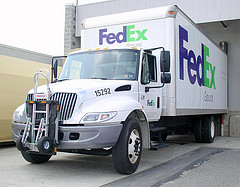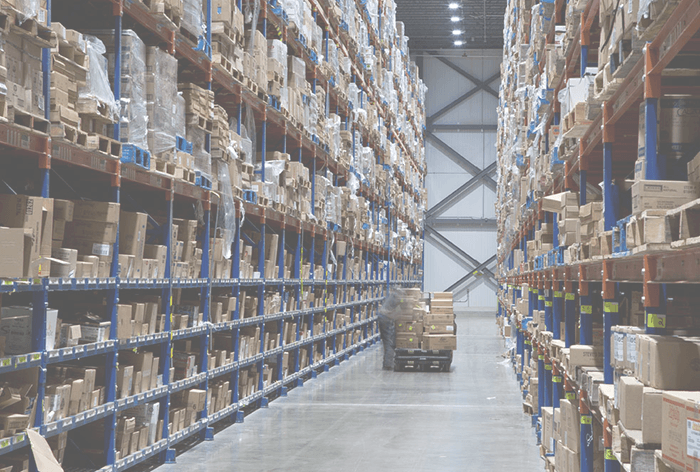After relocating my ecommerce business from California to Indiana, I’ve been re-thinking every aspect of my operation.
I no longer have an assistant, and now that I work out of my home I have limited storage space. Using a fulfillment center to outsource warehousing and shipping was an obvious opportunity for me to improve efficiency.
Where to start?
To be honest, finding a good warehouse & fulfillment center was easier than I thought.
I started with asking my colleagues what they were using. The most common answer given was Amazon FBA (Fulfillment by Amazon).
I am in the process of executing a multi-channel selling strategy with the launch of my own website, and while there are easy solutions available for multi-channel fulfillment with FBA, I was hesitant to hand my entire inventory over to Amazon precisely at the time I am rebuilding my strategy.
Amazon changes FBA fees frequently and inventory that doesn’t turn over quickly is charged an extra storage fee; this gave me reason for pause. Another factor that discouraged me from using their service is that products are sent to warehouses in many states, thus creating nexus and multiple new sales tax liabilities for my business.
For these reasons, and also because Amazon does not allow used clothes in its marketplace so my product line is ineligible, I kept looking for a different solution.
A simple Google search led me to the fulfillment section of Internet Retailer’s vendor directory.
From here I found Indiana-based warehouses (since I already collect sales tax in Indiana) and learned more about them by carefully studying their websites. I followed up with a few phone calls and eventually visited one of the warehouses in person.
It was a very good match for my business needs, and we are in the process of getting set-up. There were many factors to consider when using a fulfillment center for Office Threads, and I’ve described them below to help you with your selection.
Nexus
The first major concern I had with using a fulfillment center was creating nexus for a new tax jurisdiction. I live and operate my business in Indiana, but I know from a lot of my colleagues what a headache it can be to use Amazon FBA for fulfillment because of the lack of control over where your products are warehoused.
If I were to store inventory in new states outside of Indiana, I would be creating new tax liabilities for myself. Remember, my objective was to make things simpler and more efficient – having tax filing liability in one or more new jurisdictions would circumvent that purpose.
For this reason, I concentrated my search on warehouse & fulfillment centers in Indiana, where I am already required to collect and remit sales tax.
Random fees

Because we cannot precisely predict how long each product will remain in inventory, comparing fulfillment services can be challenging. To keep my costs down and to make it easier to plan ahead I selected a fulfillment center that has a flat fee of less than $1 per item when it sells (no storage fees); this way I won’t get caught off guard with outrageous bills as those little fees add up each month.
Ability to scale
Another concern of mine was that I am, at present, a very small operation. When I reopen my store, I will have a total inventory of perhaps 300 items.
My goal is that once I have outsourced warehousing and fulfillment, I will have more free time to source and list products. A short-term goal is 500 transactions per month, but before the year ends I would hope to reach 1,000 transactions per month.
This level of growth necessitates a fulfillment center that can scale and grow with me. To make sure the center I selected would be able to do this, I arranged a tour of the facility. After seeing the facility with my own eyes and meeting the staff, I feel assured they can sustain my growth.
Coordinating inventory
One of the steps that I was most apprehensive about was how to add new inventory at the fulfillment center.
The process we will use is simple enough, I will receive and record new inventory as I always have at my home office. I sell used clothing so each item is unique; receiving the inventory here first allows me to write full product descriptions before forwarding the inventory to the fulfillment center.
What was a delightful surprise, though, was to learn that if I were to sell items that did not need write-ups with the item in-hand, they could be sent to my fulfillment center directly from the manufacturer or wholesaler.
One of my future plans is to develop a private label clothing line, so this is a service which will greatly expedite the time it takes to get my new inventory to market. For now, I will simply e-mail a spreadsheet of items I am sending (with SKUs and short descriptions), print the spreadsheet to use as a packing list, and send the new merchandise to the warehouse after the descriptions are composed on my end.
Shipping

The flat rate parcels they offer also make is easy for me to offer free shipping, as the cost is fixed. This is also the cheapest international shipping option available for my customers.
I made sure the warehouse would work with the USPS, would have the requisite flat rate envelopes and boxes on hand, and would be able to upload tracking numbers automatically so I could manage customer service inquiries. Working with a third party shipping service that plugs-in to my inventory control software was critical and (fortunately) very easy to coordinate.
Returns
Until the fulfillment center asked me, I honestly hadn’t thought about how I would handle returns.
Because I selected a warehouse that is experienced with fashion retail, they are already equipped to evaluate the condition of items on return. This is a life saver, because it means when I am traveling returns are handled at the warehouse level.
At most I will need to check e-mail and initiate payment refunds when I get an all clear from the warehouse. Otherwise, I would have needed to personally inspect the returns at my home office before refunding, which could lead to delays and customer service issues if I happened to be out of town.
Photography

Each item I sell is unique and needs to be photographed individually. Because I only have a quantity of one for each product I sell, it may not be cost effective for them to do this service on my behalf.
But, if I sold large multiple quantities of the same new product instead, this could be an amazing feature.
Think about it.
You order the product, it goes straight to the warehouse, and they take the pictures for you. They e-mail you the product pictures, you list, and BAM! – You are done, and the products never cluttered up your garage or dining room table.
System integration
The last major factor is using a fulfillment center, and probably the trickiest, is to make sure that your systems will integrate with their systems. This may mean you need to subscribe to third party inventory or postage platforms that will allow the warehouse to automatically get information on your sales so they can fulfill the orders.
The basics you will need are having the orders appear at the warehouse and making sure the shipping information flows back to you or your selling platform (eBay, Amazon, BigCommerce, Sellbrite) so the customer knows the item is on the way.
Fully and seamlessly integrating my system with the center I selected would have cost several thousand dollars, since custom software would need to have been written. That was not feasible.
My account manager at the center came up with a creative solution. I would give them password access to my inventory service, and they would do the shipping right from the ShipStation interface already in place with my own USPS account.
This way when an order ships, tracking information will automatically feed back to the original channel (through Sellbrite), depending on where the sale originated.
In the future I may want to invest in the full software integration as my sales volume scales, but for now we have an inexpensive and effective system that meets my basic operational needs. I should be on-line with the new fulfillment center within 2 weeks, and can’t wait!



19 thoughts on “Why I’m Using A Fulfillment Center”
Thanks for sharing your experiences in this area with us, Sandi. This is very helpful for future reference. Good luck with this new chapter in your business. Please update us periodically, as things will undoubtedly come up.
I do have a question, though. It probably is not a big issue, but I wonder what happens when a potential buyer has a question about one of your items, and you need the item to be in front of you in order to provide an answer? Will you be forwarding the questions to the fulfillment center and have them check out the item, or will you have to physically go to the warehouse and retrieve the item?
You’re most welcome, Serena!
I have an extremely core product line (pre-owned office clothing for women) and write very complete descriptions with a LOT of photos and measurements. Before I temporarily closed for relocation, at most I had 2 inquiries for extra details per month. Of those 2, the answer was usually in the description and the shopper didn’t see it. Given that, this should be a relatively rare occurrence.
In the event that a question comes up which necessitates pulling the inventory I will apologize to the shopper and extend free round-trip shipping if it needs to be returned. This gives them an immediate response. Because I accept returns and would pay for the return in this case, there is no risk to the buyer. This particular warehouse could pull inventory and answer questions for me – but that is inefficient for one-of-a-kind items that cost on average $25-30. Sometimes not disrupting your systems, even though it might cost you a sale, is the most cost effective thing to do as long as you are making an effort at good customer service.
Yes, I figured you probably didn’t get a whole lot of questions, but thought I’d ask because, well, I like to dream up all types of scenarios, no matter how rare 😉 But great workaround, and you’re right, you need to weigh efficiency against sales, as both cost money. To give up efficiency may give you a sale, but the costs – in time and money – may not be worth it.
Thanks for sharing your experiences in this area with us, Sandi. This is very helpful for future reference. Good luck with this new chapter in your business. Please update us periodically, as things will undoubtedly come up.
I do have a question, though. It probably is not a big issue, but I wonder what happens when a potential buyer has a question about one of your items, and you need the item to be in front of you in order to provide an answer? Will you be forwarding the questions to the fulfillment center and have them check out the item, or will you have to physically go to the warehouse and retrieve the item?
You’re most welcome, Serena!
I have an extremely core product line (pre-owned office clothing for women) and write very complete descriptions with a LOT of photos and measurements. Before I temporarily closed for relocation, at most I had 2 inquiries for extra details per month. Of those 2, the answer was usually in the description and the shopper didn’t see it. Given that, this should be a relatively rare occurrence.
In the event that a question comes up which necessitates pulling the inventory I will apologize to the shopper and extend free round-trip shipping if it needs to be returned. This gives them an immediate response. Because I accept returns and would pay for the return in this case, there is no risk to the buyer. This particular warehouse could pull inventory and answer questions for me – but that is inefficient for one-of-a-kind items that cost on average $25-30. Sometimes not disrupting your systems, even though it might cost you a sale, is the most cost effective thing to do as long as you are making an effort at good customer service.
Yes, I figured you probably didn’t get a whole lot of questions, but thought I’d ask because, well, I like to dream up all types of scenarios, no matter how rare 😉 But great workaround, and you’re right, you need to weigh efficiency against sales, as both cost money. To give up efficiency may give you a sale, but the costs – in time and money – may not be worth it.
Thanks for sharing your experiences in this area with us, Sandi. This is very helpful for future reference. Good luck with this new chapter in your business. Please update us periodically, as things will undoubtedly come up.
I do have a question, though. It probably is not a big issue, but I wonder what happens when a potential buyer has a question about one of your items, and you need the item to be in front of you in order to provide an answer? Will you be forwarding the questions to the fulfillment center and have them check out the item, or will you have to physically go to the warehouse and retrieve the item?
You’re most welcome, Serena!
I have an extremely core product line (pre-owned office clothing for women) and write very complete descriptions with a LOT of photos and measurements. Before I temporarily closed for relocation, at most I had 2 inquiries for extra details per month. Of those 2, the answer was usually in the description and the shopper didn’t see it. Given that, this should be a relatively rare occurrence.
In the event that a question comes up which necessitates pulling the inventory I will apologize to the shopper and extend free round-trip shipping if it needs to be returned. This gives them an immediate response. Because I accept returns and would pay for the return in this case, there is no risk to the buyer. This particular warehouse could pull inventory and answer questions for me – but that is inefficient for one-of-a-kind items that cost on average $25-30. Sometimes not disrupting your systems, even though it might cost you a sale, is the most cost effective thing to do as long as you are making an effort at good customer service.
Yes, I figured you probably didn’t get a whole lot of questions, but thought I’d ask because, well, I like to dream up all types of scenarios, no matter how rare 😉 But great workaround, and you’re right, you need to weigh efficiency against sales, as both cost money. To give up efficiency may give you a sale, but the costs – in time and money – may not be worth it.
Thanks Sandi for this great article and lots of insight! Definitely looking forward to learning more and your experience. This definitely makes all the sense in the world and finding a company in your current state of residence will save so many headaches and so much time. I look forward to your next follow up.
Thanks, Kathy! It was like a light bulb switching on when I realized I could use a warehouse in my own state and not create any new nexus drama. 🙂
Thanks Sandi for this great article and lots of insight! Definitely looking forward to learning more and your experience. This definitely makes all the sense in the world and finding a company in your current state of residence will save so many headaches and so much time. I look forward to your next follow up.
Thanks, Kathy! It was like a light bulb switching on when I realized I could use a warehouse in my own state and not create any new nexus drama. 🙂
Thanks Sandi for this great article and lots of insight! Definitely looking forward to learning more and your experience. This definitely makes all the sense in the world and finding a company in your current state of residence will save so many headaches and so much time. I look forward to your next follow up.
Thanks, Kathy! It was like a light bulb switching on when I realized I could use a warehouse in my own state and not create any new nexus drama. 🙂
Hi, Sandi! This is very helpful as I am looking to expand my home business. I’m also based in Indiana. Would you mind sharing with me the fulfillment center that you found? Thanks!
Hi, Sandi! This is very helpful as I am looking to expand my home business. I’m also based in Indiana. Would you mind sharing with me the fulfillment center that you found? Thanks!
Hi, Sandi! This is very helpful as I am looking to expand my home business. I’m also based in Indiana. Would you mind sharing with me the fulfillment center that you found? Thanks!
Shipwire, Webgistix, eFulfillmentService or amazon have the most popular order fulfillment services, but sometimes companies need special customization when they process his order, Velocityship in addition to help all automated part of the order processing, returns, can offers you the best shipping prices from usa worldwide.